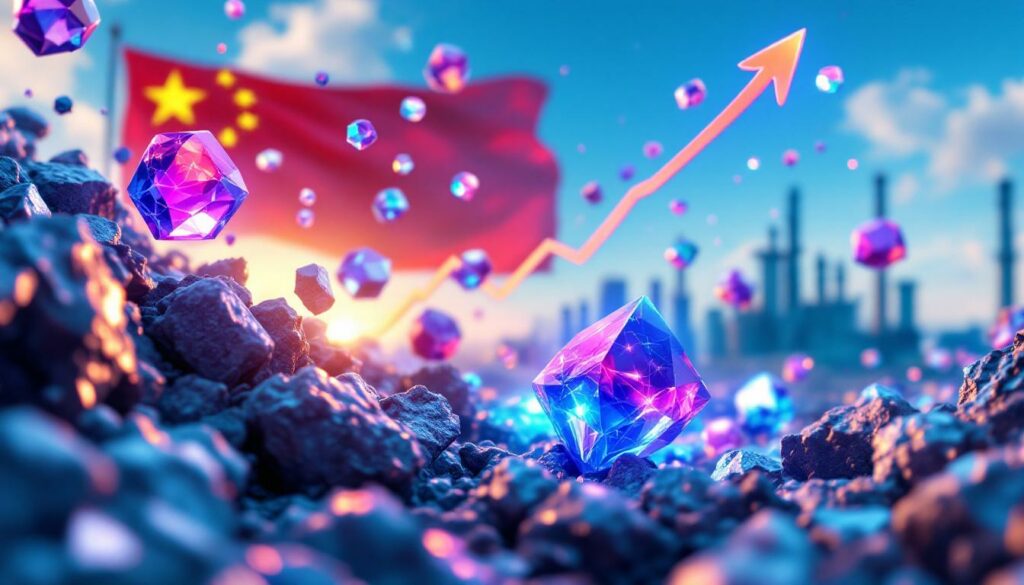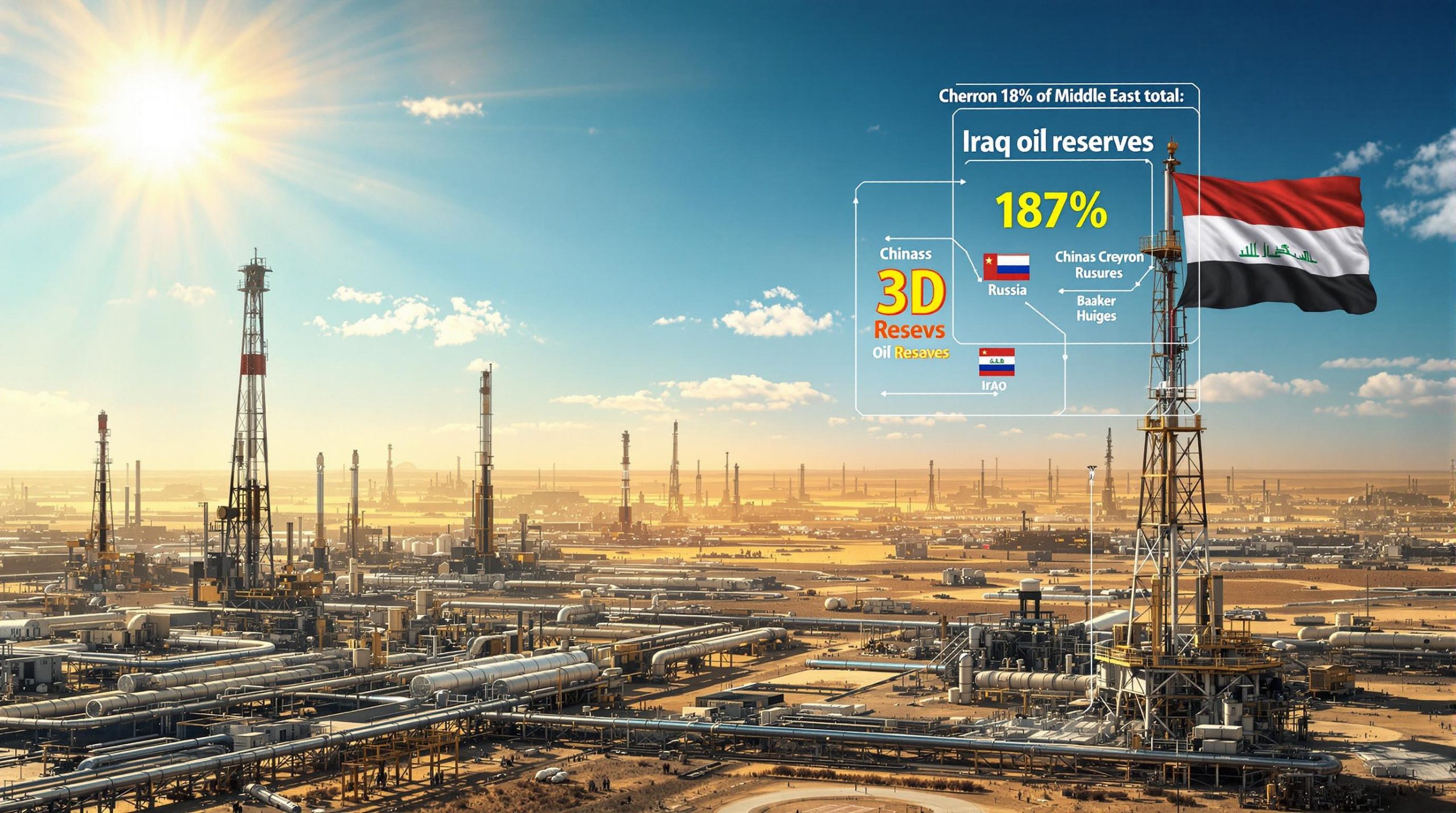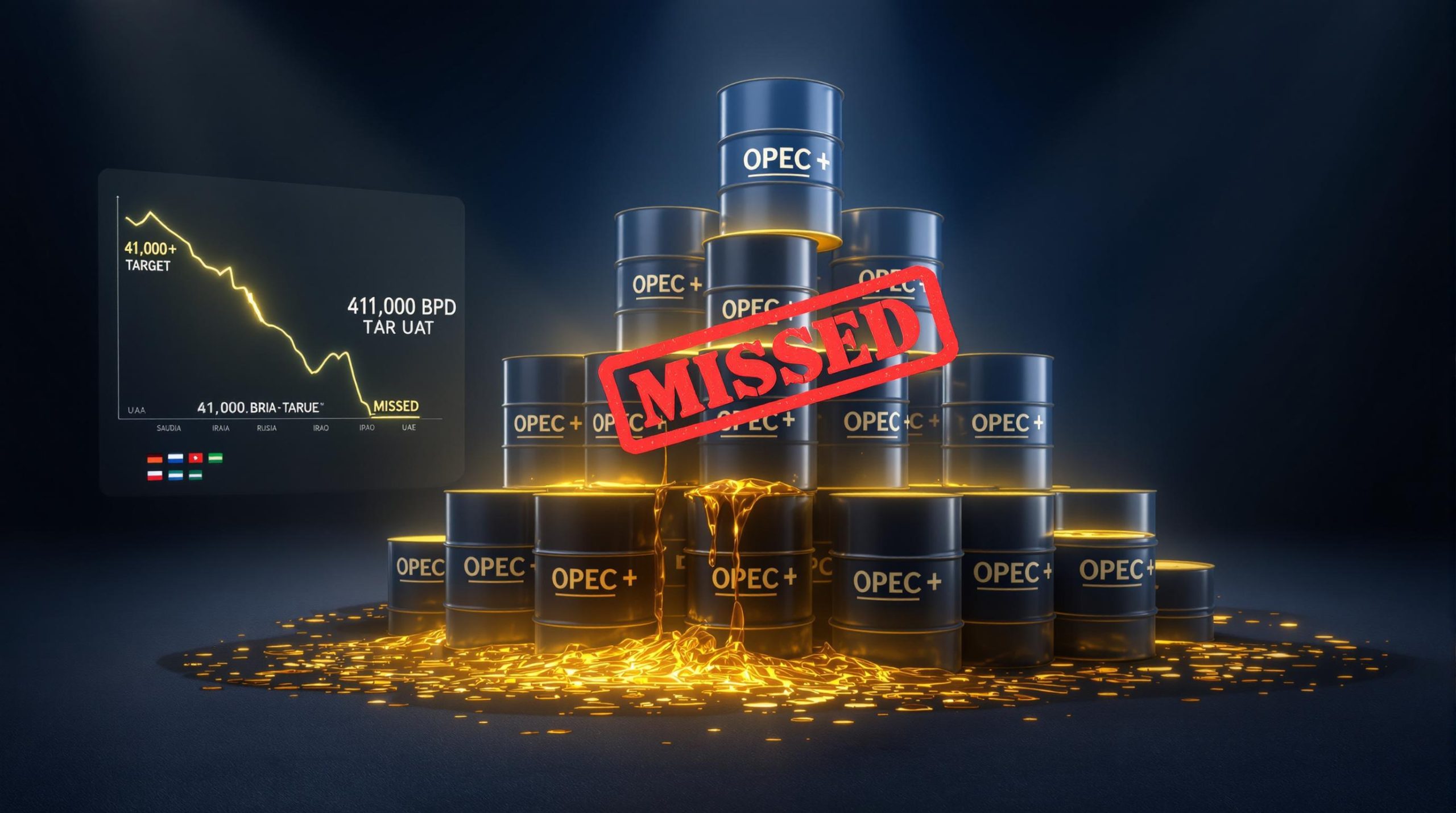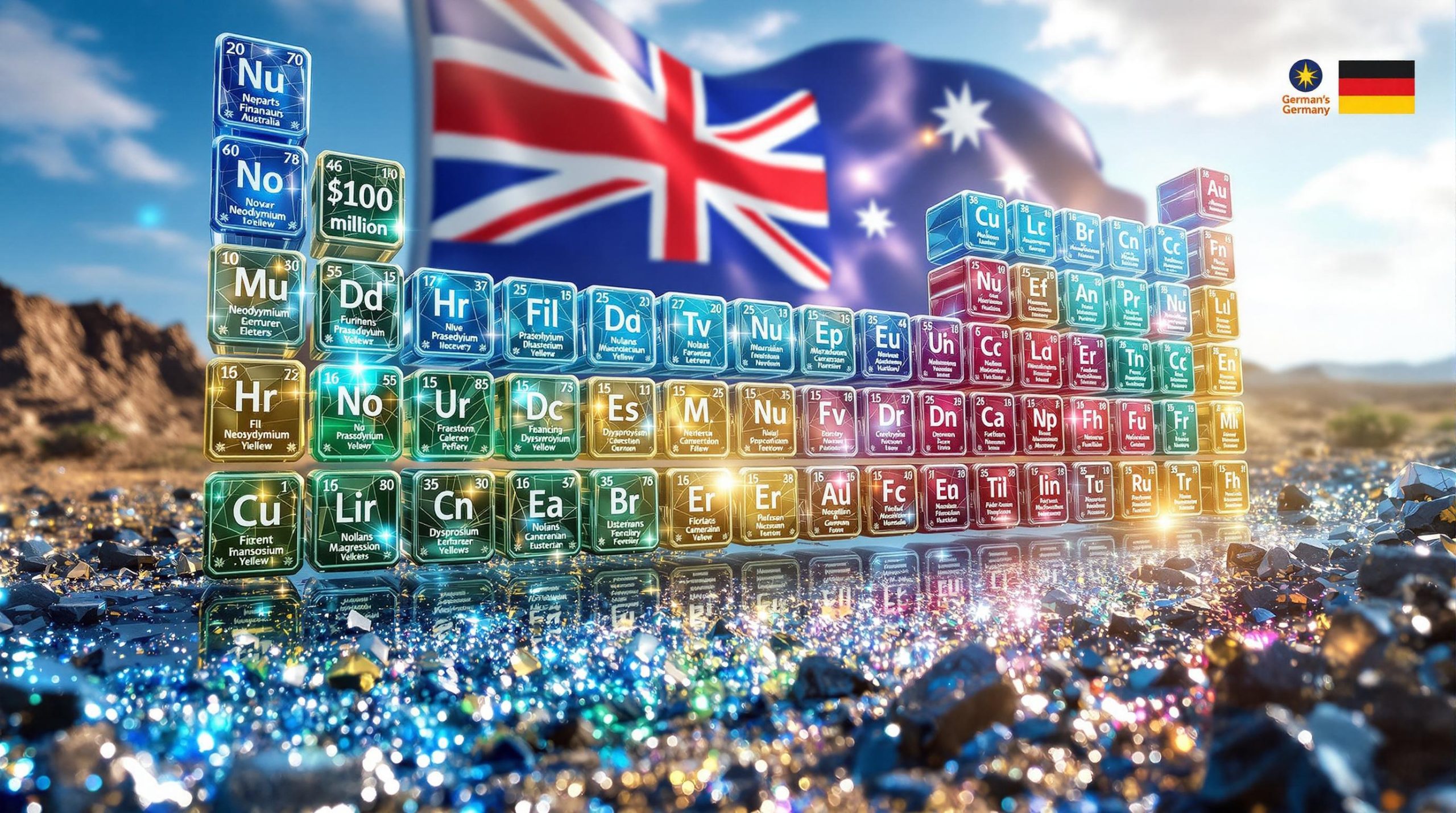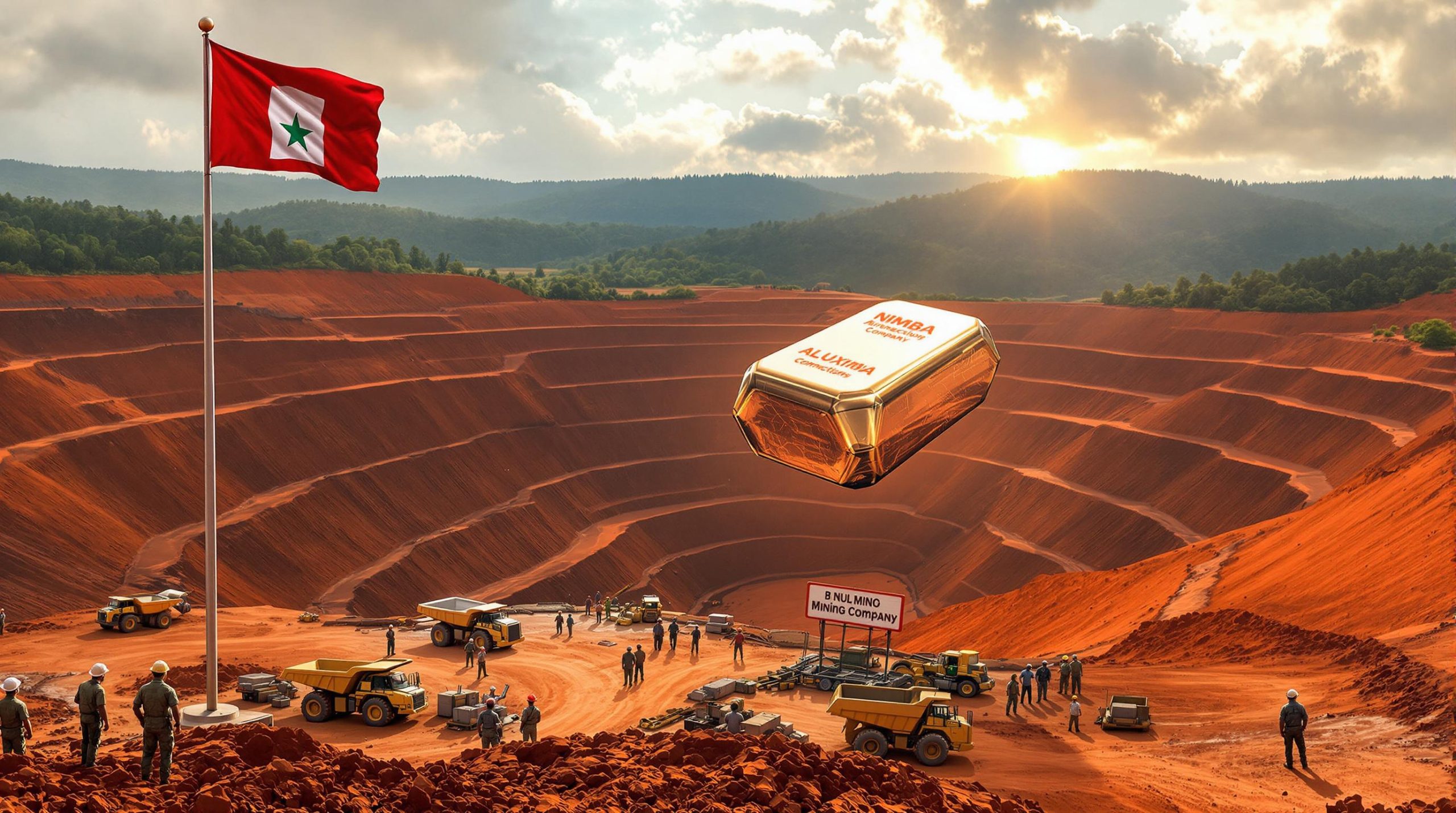What's Driving the 1.51% Price Increase in Q3 2025?
China Northern Rare Earth has officially announced a 1.51% quarter-over-quarter increase in rare earth concentrate prices for Q3 2025. The new transaction price has been set at 19,109 yuan/mt (dry basis, REO=50%), representing a 284 yuan/mt increase from the Q2 2025 price of 18,825 yuan/mt. This adjustment follows approval at the company's 11th General Manager's Office Meeting and continues the upward pricing trend observed throughout 2025.
The price adjustment reflects ongoing market dynamics in the rare earth sector, where supply constraints and growing demand continue to push prices higher across the industry. China Northern Rare Earth, as one of the country's largest rare earth producers, serves as a bellwether for broader market conditions.
Pricing Mechanism Details
The pricing structure includes an adjustment parameter of 382.18 yuan/mt for every 1% increase or decrease in REO content, excluding tax. This represents a slight increase from the Q2 adjustment parameter of 376.50 yuan/mt, reflecting the overall upward movement in the rare earth market.
The calculation methodology follows a transparent formula established through formal corporate governance procedures. This system ensures that price adjustments accurately reflect market conditions while providing a level of predictability for both suppliers and buyers in the rare earth value chain.
How Have Rare Earth Concentrate Prices Evolved in 2025?
Quarterly Price Progression in 2025
The Q3 price increase continues a consistent upward trend observed throughout 2025:
| Quarter | Price (yuan/mt) | Change (yuan/mt) | Percentage Change |
|---|---|---|---|
| Q1 2025 | 18,618 | +836 (from Q4 2024) | +4.70% |
| Q2 2025 | 18,825 | +207 | +1.11% |
| Q3 2025 | 19,109 | +284 | +1.51% |
This sequential quarterly growth demonstrates sustained market strength in the rare earth sector, with prices increasing by a cumulative 7.46% since Q4 2024. The steady progression suggests a market that has found a sustainable growth pattern, providing stability for both producers and consumers in the supply chain.
Comparison to 2024 Price Movements
The 2025 pricing pattern contrasts significantly with the more volatile movements observed in 2024:
| Quarter | Price (yuan/mt) | Change (yuan/mt) | Percentage Change |
|---|---|---|---|
| Q1 2024 | 20,737 | +201 (from Q4 2023) | +0.98% |
| Q2 2024 | 16,792 | -3,945 | -19.02% |
| Q3 2024 | 16,741 | -51 | -0.30% |
| Q4 2024 | 17,782 | +1,041 | +6.22% |
The 2024 market experienced significant volatility, particularly with the dramatic 19.02% drop in Q2, before beginning a recovery in Q4 that has continued throughout 2025. This volatility was largely attributed to shifting supply-demand fundamentals and market uncertainty during that period.
What Market Factors Are Influencing Rare Earth Concentrate Pricing?
Pr-Nd Oxide Price Trends
The primary driver behind the rising rare earth concentrate prices has been the upward shift in the price center of praseodymium-neodymium (Pr-Nd) oxide:
- The average price of Pr-Nd oxide reached 444,500 yuan/mt on June 30, 2025
- This represents an 11.68% increase from the December 31, 2024 price of 398,000 yuan/mt
- The daily average price in H1 2025 (429,605.26 yuan/mt) increased 12.57% year-over-year compared to H1 2024 (381,646.55 yuan/mt)
As of July 10, 2025, Pr-Nd oxide was trading at 453,000-454,000 yuan/mt (average 453,500 yuan/mt), showing continued strength in the market. This key rare earth product serves as a benchmark for the entire rare earth value chain, with its price movements typically preceding similar trends in concentrate prices.
Supply-Side Constraints
Several supply factors are contributing to the price increases:
- Production suspensions at certain rare earth enterprises
- Seasonal challenges in Southeast Asia, where the rainy season is expected to reduce ion-adsorption ore imports
- Tightening supply-demand fundamentals for Pr-Nd oxide in the short term
- Limited new production capacity coming online during Q2-Q3 2025
The ion-adsorption rare earth deposits in Southeast Asia are particularly sensitive to seasonal weather patterns, with heavy rainfall impacting extraction efficiency and transportation logistics. These climate-related disruptions create predictable supply chain crisis in critical minerals during certain periods of the year.
Demand-Side Dynamics
Demand indicators are equally supportive of higher prices:
- Increased tender activity from major magnetic material manufacturers
- Growing market confidence in downstream rare earth demand
- Approaching end of the traditional NdFeB off-season
- Anticipation of the "September-October peak season" for the industry
- Rising adoption rates in electric vehicles and renewable energy sectors
The seasonal demand patterns in the rare earth industry typically follow manufacturing cycles, with stronger demand materializing in the latter part of the calendar year as production of consumer electronics, electric vehicles, and other end products ramps up ahead of major shopping seasons. These elements are increasingly important for critical minerals for energy security in the global marketplace.
What Is the Relationship Between Bao Gang United Steel and China Northern Rare Earth?
Corporate Relationship and Pricing Mechanism
The pricing mechanism between China Northern Rare Earth and Inner Mongolia Baotou Steel Union Co., Ltd. (Bao Gang United Steel) was established through formal corporate governance procedures:
- Approved at the 25th meeting of the 8th Board of Directors on March 14, 2023
- Further approved at the first extraordinary general meeting of shareholders on March 30, 2023
- The agreement stipulates quarterly price adjustments based on a consistent pricing formula
- Price calculations occur in the first ten days of each quarter
- Each adjustment requires approval through the company's management structure
- New supply contracts or supplementary agreements are signed following each adjustment
This formalized process ensures transparency and consistency in the pricing relationship between these major players in China's rare earth industry. The systematic approach provides market stability while allowing prices to adjust to reflect changing economic conditions.
The relationship between these companies represents a strategic supply chain partnership in China's rare earth sector, with Bao Gang United Steel serving as a critical supplier of raw materials for China Northern Rare Earth's downstream processing operations. This vertical integration helps optimize resource allocation and strengthens the overall industry structure.
What's the Market Outlook for Rare Earth Prices?
Industry Consensus on Future Price Direction
Market analysis indicates strong support for continued price increases in the rare earth sector:
- Industry consensus points to tightening supply-demand fundamentals for Pr-Nd oxide
- The approaching traditional peak season (September-October) is expected to strengthen market sentiment
- Pr-Nd prices are widely anticipated to continue rising in the coming period
- The early July price trend (continuous increases from July 3-8) suggests ongoing momentum
Market observers note that while price increases may moderate in pace compared to previous years, the underlying fundamentals remain supportive of sustained strength in rare earth pricing. The sequential increases throughout 2025 have created a pattern that market participants view as more sustainable than the volatile swings observed in 2024.
Factors Supporting Price Stability
Several underlying factors provide support for the current price levels:
- Structural changes in supply chains
- Growing demand from permanent magnet applications
- Seasonal production patterns affecting global supply
- Increased market confidence based on tender activity from major buyers
- Environmental and regulatory requirements creating entry barriers for new suppliers
The long-term outlook for rare earths remains positive due to their critical role in green energy technologies, advanced electronics, and defense applications. These strategic applications ensure sustained demand even as supply faces various constraints from geological, geographical, and regulatory factors. The critical raw materials facility developments in Europe further highlight the global importance of these resources.
How Do Current Rare Earth Concentrate Prices Compare Historically?
Long-Term Price Trend Analysis
Examining the historical context of rare earth concentrate prices reveals important patterns:
- The current Q3 2025 price (19,109 yuan/mt) remains below the peak levels seen in Q1 2024 (20,737 yuan/mt)
- However, prices have recovered significantly from the lows of Q3 2024 (16,741 yuan/mt)
- The current price represents a 14.15% increase from the Q3 2024 low point
- The steady quarterly increases throughout 2025 suggest a more stable and sustainable growth pattern compared to the volatility experienced in 2024
This historical perspective indicates a market that has found equilibrium after significant turbulence, with prices now following a more predictable upward trajectory. Industry analysts note that the rare earth market tends to move in multi-year cycles, with periods of price discovery followed by more stable trends once market participants adjust to new fundamentals.
The current price levels reflect a balance between ensuring sufficient returns for producers while avoiding the extreme spikes that could trigger demand destruction or accelerate substitution efforts in downstream applications. This balance is crucial for the long-term health of the rare earth industry and is driving new mining industry innovation trends to improve efficiency and sustainability.
FAQ: Understanding Rare Earth Concentrate Pricing
What factors determine rare earth concentrate prices?
Rare earth concentrate prices are primarily influenced by downstream product prices (particularly Pr-Nd oxide), supply-demand balance, production costs, seasonal factors affecting mining operations, and global market dynamics. The pricing formula used by China Northern Rare Earth incorporates these elements to establish quarterly transaction prices.
Additional factors include:
- Extraction technology advancements
- Environmental compliance costs
- Transportation and logistics expenses
- Regional supply constraints
- Strategic stockpiling activities
How does the REO content affect pricing?
The REO (Rare Earth Oxide) content directly impacts pricing through a proportional adjustment mechanism. For Q3 2025, the base price of 19,109 yuan/mt applies to concentrate with 50% REO content, with an adjustment of 382.18 yuan/mt for each percentage point variation in REO content.
For example:
- Concentrate with 51% REO would be priced at 19,491.18 yuan/mt (19,109 + 382.18)
- Concentrate with 49% REO would be priced at 18,726.82 yuan/mt (19,109 – 382.18)
This ensures fair pricing based on the actual rare earth content of the concentrate, reflecting the true economic value of the material.
What is the significance of the quarterly price adjustments?
The quarterly adjustment system provides market stability while allowing prices to reflect changing market conditions. This balance between stability and responsiveness helps both producers and consumers plan their operations effectively, while ensuring prices remain aligned with underlying market fundamentals.
Quarterly adjustments prevent:
- Excessive short-term volatility that could disrupt supply chains
- Price stagnation that fails to reflect true market conditions
- Contract disputes arising from outdated pricing structures
How do rare earth concentrate prices affect downstream industries?
Rare earth concentrate prices directly impact the cost structure of the entire rare earth value chain, including separation facilities, metal producers, alloy manufacturers, and end-use sectors like permanent magnets, catalysts, and electronics. Price changes at the concentrate level eventually propagate through to consumer products containing rare earth elements.
Key downstream impacts include:
- Cost structures for NdFeB magnet production
- Pricing for electric vehicle motors and wind turbine generators
- Research investments in alternative technologies
- Strategic planning for technology companies reliant on rare earth components
Further Exploration:
Readers interested in learning more about rare earth market trends can also explore related educational content, such as Shanghai Metal Market's rare earth price analysis, which offers additional perspectives on price movements in this critical mineral sector. Furthermore, the growing importance of Greenland critical minerals is emerging as another factor in the global rare earth supply chain according to the Asian Metal industry report.
Disclaimer: This article contains forward-looking statements and market analysis based on current trends. Future price movements may differ from projections due to unforeseen market factors, policy changes, or global economic shifts. Readers should conduct their own research before making business or investment decisions related to rare earth markets.
Ready to Get Ahead of the Next Major Rare Earth Price Movement?
Stay informed on significant mineral discoveries and market-moving events with Discovery Alert's proprietary Discovery IQ model, which delivers real-time alerts on ASX opportunities across critical minerals including rare earths. Visit the Discovery Alert discoveries page to understand how identifying early-stage opportunities can lead to substantial investment returns.
